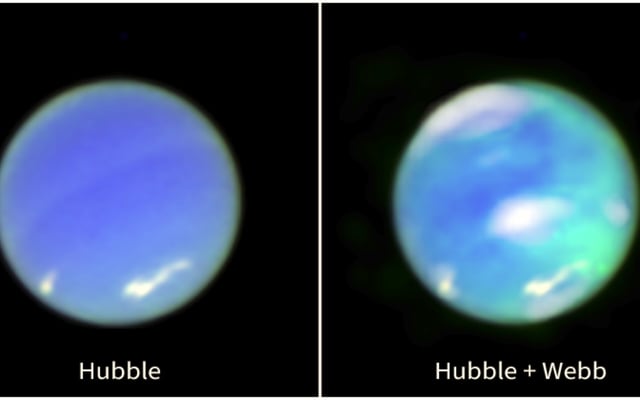Overview
- The James Webb Space Telescope has provided the first-ever direct images of auroras on Neptune, using its Near-Infrared Spectrograph to detect the trihydrogen cation (H3+), a key auroral indicator.
- Neptune's auroras occur at mid-latitudes rather than poles due to the planet's highly tilted magnetic field, which is misaligned by 47 degrees from its rotational axis.
- The planet's upper atmosphere has cooled significantly since Voyager 2's 1989 flyby, explaining why auroras had remained undetected until now.
- Collaborative data from Webb and Hubble confirmed the findings, showcasing the power of combining infrared and visible light observations.
- Researchers plan to study Neptune's auroras over a full solar cycle to better understand its magnetic field and atmospheric dynamics, with implications for studying other ice giants and exoplanets.
